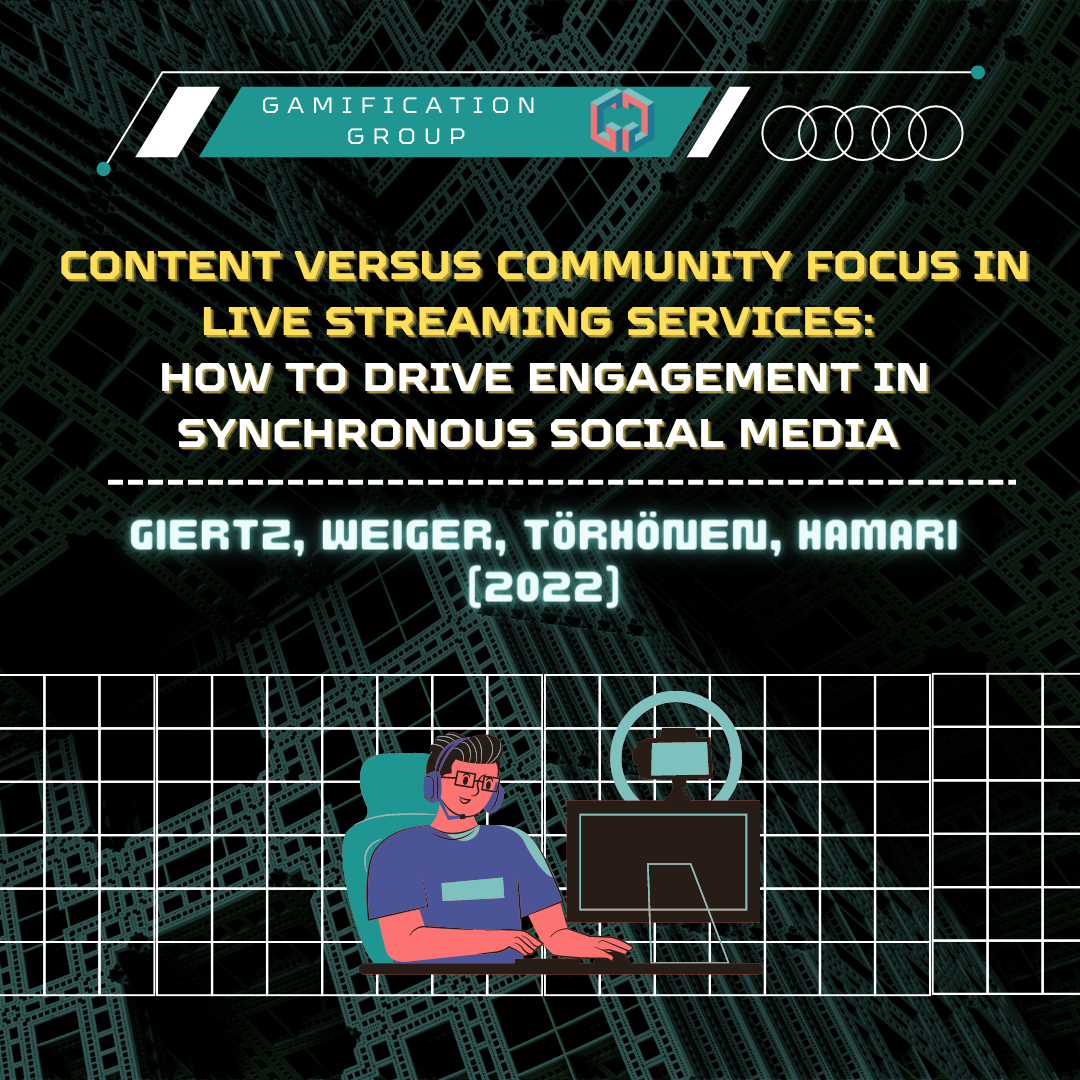
Content versus community focus in live streaming services: how to drive engagement in synchronous social media
Social live-streaming (SLS) has gained considerable popularity in recent years, especially among younger generations, due to many factors. The real-time engagement affordances created by this form of content creation enable novel behaviors and monetization structures. This paper presents the results of a study that examined how different approaches to content or community orientation affect viewership and monetization aspects.
The study is structured through two main research questions. Firstly, “How do community- and content-focused communication influence user engagement with the stream?”, and secondly, “How does a utilitarian-superior communication style moderate the impact of communication focus on user engagement?”. By utilitarian-superior communication, the authors mean a predominantly educational approach (in contrast to a hedonic approach).
To answer these research questions, a two-wave questionnaire regarding viewers’ perceptions of streamer communications and their actual engagement was conducted and analyzed with a sample of 215 participants. The paper established a conceptual framework as a foundation, highlighting the characteristics of synchronous social media and comparing them to asynchronous ones.
The empirical results of this study confirm the hypothesized relationships. Community-focused communication positively affected viewership, while it was negatively associated with monetization through donations. On the other hand, content-focused communication was negatively associated with viewership, while it was positively associated with monetization. Furthermore, a utilitarian-superior style promoted the satisfaction of the need for competence in content-focused communication and had a positive effect on monetization.
This study was found to have important implications for researchers, social live streamers, society, and marketing managers alike. For researchers, the importance of the conceptual differences between synchronous and asynchronous social media, as well as the impact of streamers’ approach to communication and streaming as a venue for co-creation were highlighted. For streamers, the trade-offs between different communication approaches, and for society, the engagement behaviors that emerged from SLS were noted.
The article concludes by noting some limitations that open up future research opportunities, such as investigating whether the same results are replicated in other forms of streaming, such as lifestyle or music, or with streamers with smaller audiences. The researchers also note that it is important to investigate the same topic using different methods.
Abstract
Purpose – Social live-streaming services are an emerging form of social media that is gaining in popularity among researchers and practitioners. By facilitating real-time interactions between video content creators (i.e. streamers) and viewers, live-streaming platforms provide an environment for novel engagement behaviors and monetization structures. This research aims to examine communication foci and styles as levers of streaming success. In doing so, the authors analyze their impact on viewers’ engagement with the stream.
Design/methodology/approach – This research draws on a unique dataset collected via a multi-wave questionnaire comprising viewers’ perceptions of a specific streamer’s communications and their actual behavior toward them. The authors analyze the proposed impact of communication foci on viewing and donating behavior while considering the moderating role of communication style using seemingly unrelated regressions.
Findings – The results show that communication foci represent a double-edged sword: community-focused communication drives viewership while reducing donations made to the streamer. By contrast, content-focused communication curbs viewing but drives donating.
Practical implications – Of specific interest for practitioners, the study demonstrates how streaming content providers (e.g. influencers) should adjust their communications to drive engagement in the context of synchronous social media such as social live-streaming services. Beyond that, this research identifies unique characteristics of engagement that can help managers to improve their digital service offerings.
Social implications – Social live-streaming services provide an environment that offers unique opportunities for self-development and co-creation among social media users. By allowing for real-time interactions, these emerging social media services build on ephemeral content to provide altered experiences for users.
Originality/value – The authors highlight the need to distinguish between engagement behaviors in asynchronous and synchronous social media. The proposed conceptualization sheds new light on success factors of social media in general and social live-streaming services specifically. To maximize user engagement, content creators in synchronous social media must consider their communications’ focus (content or community) and style (utilitarian or hedonic).
Keywords: Streaming, Influencers, Engagement, Social media, Community, Content Paper type Research paper




Sorry, the comment form is closed at this time.